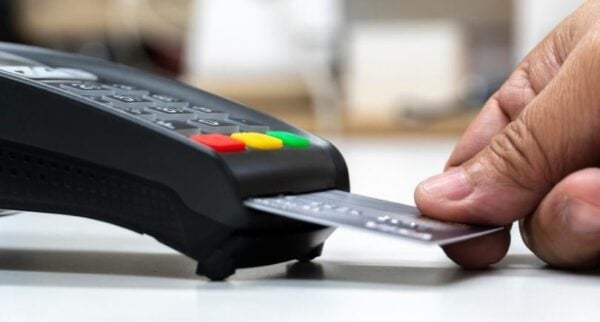You’ve been waiting for this moment for awhile now. You have a secured credit card, and you are going to make the move to an unsecured credit card. Naturally, you have questions.
- Are there secured credit cards that convert to unsecured credit cards? Like, automatically and easily?
- How to convert a secured credit card to an unsecured credit card? As in, how do I do it?
- Will converting from a secured credit card to an unsecured credit card hurt my credit? Because, really, that’s the last thing I need.
Fortunately, we have answers to those questions and more.
What is a secured credit card?
We’ll start with the basics, for those who are new to the world of secured and unsecured credit cards. A secured credit card works just like a traditional credit card except for one important difference – you furnish all or some of the money that it’s going to operate on. You’ll put down a refundable deposit of, say, $500, and then you’ll have a secured credit card with an available limit of $500.
Meanwhile, as with a regular unsecured credit card, you buy stuff with your secured credit card, and then you make payments. Hopefully you pay it off in full every month. If you want, you can carry a revolving balance, but just like a regular credit card, there will be interest to pay.
Many (but not all) secured credit cards have annual fees. Most secured credit cards (even those with annual fees) do not offer any rewards, like cash back, but there are some that do.
What is the difference between secured and unsecured credit cards?
We just explained what a secured credit card is; you put down what is effectively a security deposit. It is refundable – unless, of course, you don’t make payments and leave the credit card on the hook.
An unsecured credit card, meanwhile, is the type of credit card you’re probably familiar with. It means that you apply for the credit card, and if you’re approved, you can use the credit card to pay for whatever you want – without having to fork over a deposit first.
Obviously, most or all people would rather have an unsecured credit card instead of a secured credit card, but if you do have a lousy credit score, or a very low credit score due to not having had a credit card, having a secured credit card is a good way to get on the path toward successfully applying for an unsecured credit card.
Do secured credit cards build credit?
Yes. That’s why secured credit cards exist. They are designed for people with a history of bad credit, or perhaps no history of borrowing money. Using a secured credit card will demonstrate to lenders that you’re a trustworthy borrower – and can help convince them to lend you money without having to fork over a deposit first.
But because you either have a bad track record with borrowing money, or no track record, you don’t have that trust with the credit card issuer yet, which is why you’re first asked to use your own money with your secured credit card.
Will going from a secured credit card to an unsecured credit card improve my credit?
Not immediately, but in the long run, an unsecured credit card could help improve your credit.
Having a secured credit card doesn’t hurt your credit score – that should be the important takeaway here – which is why if you make the switch to an unsecured credit card, your credit score won’t immediately start climbing.
Whether it climbs or plummets or remains kind of the same after you make the switch from a secured credit card to an unsecured one depends on how you use the credit card.
In other words, pay your monthly bills on time, and try to make sure you don’t borrow more than 30% of your available credit and preferably less, so you can keep your credit utilization ratio low. It’s financial behavior like that, that should make your credit score rise.
What is a credit utilization ratio?
It’s the percentage of the available credit that you have on your credit card. Let’s say you have $1,000 credit limit, and you’ve borrowed $500. Your credit utilization ratio is 50%. Credit card companies and lenders in general, unfortunately, don’t like it when people borrow a lot of the money that they have available to them. The higher your credit utilization ratio, especially if it stays high for months at a time, the more your credit score could be damaged. Now, for those with strong self control, applying for several credit cards and thereby increasing your amount of available credit while not increasing your spending would lower your credit utilization ratio. The bottom line is that you can have a lot of available credit, but only use a small amount of what you have available.
In fact, some experts suggest you shouldn’t go over 10% of your credit utilization ratio, which, yes, means that if you want to borrow a lot, to keep your credit score high, you’re going to have a whole lot of available credit.
“”A good credit utilization ratio is considered to be less than 30% of your available credit; a lower utilization ratio can improve your credit score,” asserts Linda Simpson, professor of financial literacy at Eastern Illinois University.
Of course, it should probably be noted that this is the case when we’re talking about FICO credit scores. VantageScore, a completely separate kettle of fish, looks at the credit utilization ratio but generally doesn’t hold it again consumers if they have a high credit utilization ratio for short periods of time or if they are paying their bill in full of every month. Unfortunately for people who get close to maxing out their credit cards but always pay them down every month, as we’ve mentioned, FICO is the more popular credit score for lenders.
>>Learn more about FICO vs. VantageScore credit scoring models.
Will converting from a secured credit card to an unsecured credit card hurt my credit?
Let’s circle back to the question above. Whether making the switch from a secured credit card to an unsecured credit card hurts your credit or not depends on your financial habits.
Most lenders use the FICO model that relies on five key personal finance elements to determine your credit score:
- Payment history (counts as 35% of the score)
- Credit utilization (30%)
- Credit history length (15%)
- New credit obtained (10%)
- Mix of credit accounts (10%)
So your credit score is always going up and down somewhat, any time you borrow money, or if you’re late, or on time with a payment. You want to be aware of this but the main thing to remember is that paying your bills on time has a bigger impact on your credit score than any other single element.
In fact, on-time payments make as big of a difference to your credit score as the combined points from the length of your credit history, your new credit, and your borrowing styles.
If you’ve been making your secured credit card payment on time every month, you have already made an improvement on two of the most important scoring elements. You strengthened your on-time payment history, and you rehabilitated your credit, which FICO factors into the “new credit” category.
Here’s the minor problem about closing the secured credit card that you’ll want to be aware of. If you start a secured credit card account with an issuer that charges a $50 annual fee, eventually you’re probably going to want to ditch that secured credit card for a better one. And once you’ve built a strong enough credit report to attract pre-qualification offers from reputable companies such as Chase or Citi, you face a decision.
Dropping the secured credit card will save you money in the short term if you’re no longer paying an annual fee and getting your refundable deposit back, but no longer having that card reduces your overall amount of available credit (remember your credit utilization ratio?), your total number of active lenders, and the age of your longest open account. (You’ll still get points for the date you first opened your secured account, however.)
All of those factors will depress your credit score for a short time, during which you might find it harder to qualify for the best mortgage rates or the lowest insurance premiums.
You want to be aware that this could happen – because, for instance, you may want to hang onto the secured credit card for a little longer if you’re about to apply for a loan – say, a mortgage or car loan – and need your credit score to be as high as possible.
But, again, your credit score is probably a lot higher than it was. So don’t be scared away by secured credit cards.
At the same time, this underscores the importance of checking the fine print and choosing that secured credit card wisely. You may be able to find a secured credit card that won’t hurt your credit score at all when you make the move from a secured credit cardholder to an unsecured one.
For example, Capital One has built a reputation for graduating their secured credit card customers to partially secured status, then removing deposit requirements entirely after months of on-time payments. If your account number stays the same, your credit score should keep climbing as your account gets older.
Another reason to comparison shop and really look for a good secured credit card is that there are a lot of bad ones out there. Stay away from companies that charge crazy high annual fees. Some annual fees are very typical, but when you get to $50 and higher, you should be wary – and of monthly maintenance fees. In general, if there are a lot of fees, you can probably do better. You’ll also want to compare the APRs on secured credit cards.
By building a relationship with a brand you trust, you can quickly outgrow your secured card and earn your way into more perks and privileges.
The bottom-line on secured credit cards and unsecured credit cards
Nobody really wants a secured credit card. After all, you have to pay your own hard earned money up front – and you’re going to borrow it. And if you don’t pay it all back within 30 days, you’ll be charged interest on it.
On your own money.
It sounds crazy.
But the only thing crazier would be to not apply for a secured credit card, if that’s what you need. Unless you’re a millionaire who never needs to borrow money, it’s very hard to get through life without the help of financial lenders. If you want a loan on a house or a car, or if you want to take out student loans, you need good credit. And credit cards are simply one of the best and easiest way to demonstrate to lenders that you’re a good credit risk. If you have bad credit and possibly no credit, it often starts with a secured credit card. It may not be an ideal way to prove that you’re a good credit risk, but for many consumers, it’s a godsend.


